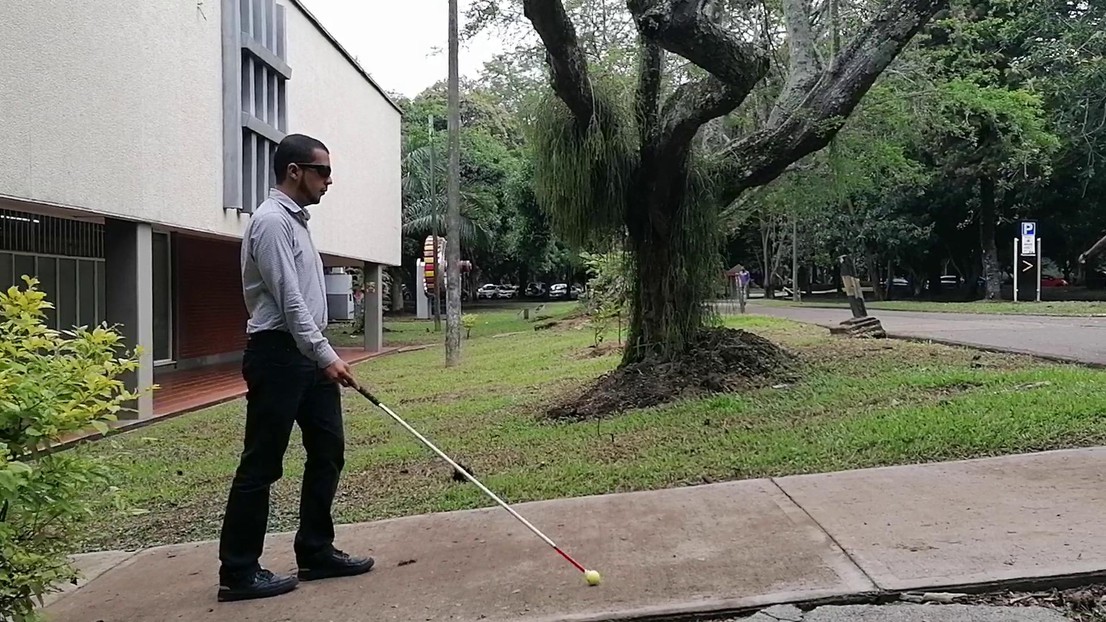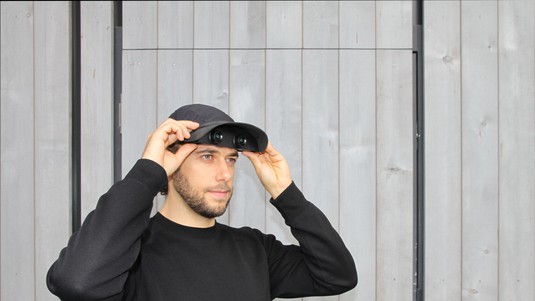GlobalViewAid: End of the 2nd phase

© 2024 EPFL EssentialTech Centre
Building on its user-centered approach, the second phase of the GlobalViewAid project introduced key enhancements to refine its innovative mobility aid for the visually impaired. By integrating user feedback, the team improved the system with audio-based obstacle alerts and seamless navigation app integration.
Enhancing Mobility for the Visually Impaired: The Evolution of GlobalViewAid
GlobalViewAid is transforming mobility for visually impaired individuals by addressing key challenges in traditional navigation tools. While white canes help detect obstacles, they often fall short in identifying hazards at head level or reacting to moving objects in real-time. To bridge this gap, researchers developed an advanced mobility aid powered by machine learning, designed to detect and track obstacles more effectively.
From Concept to Real-World Testing
Through extensive user interviews, the team gained valuable insights into the needs and expectations of visually impaired individuals. This feedback highlighted the importance of not just detecting obstacles but also ensuring smooth and intuitive navigation. As a result, the device was enhanced with real-time responsiveness, an easy-to-use interface, and integration with navigation apps.
Real-world testing played a crucial role in refining GlobalViewAid. Trials were conducted in different environments, including a public park in Colombia and urban settings in Switzerland. Participants emphasized the importance of immediate feedback over absolute precision, reinforcing the need for a responsive and adaptive system. The Swiss Federation of the Blind and Visually Impaired (FSA/SBV) also contributed by integrating its specialized navigation app, further improving the user experience.
Smarter, Faster, and More Intuitive
The latest advancements in GlobalViewAid introduce more efficient obstacle detection, tracking, and navigation support. The system now recognizes both low- and high-level obstacles, including moving hazards like pedestrians, bicycles, and animals. Instead of relying solely on voice alerts, the device uses encoded acoustic signals to convey information quickly and effectively, reducing cognitive overload for users.
By leveraging advanced machine learning, the technology predicts movement patterns and alerts users only when necessary, making navigation in complex environments more intuitive. These improvements help users move with greater confidence, whether crossing streets, navigating busy public spaces, or exploring new locations.
A Path Toward Accessibility and Innovation
With proven feasibility and positive user feedback, GlobalViewAid is now focused on refining the design, improving efficiency, and preparing for larger-scale production. Efforts are also underway to ensure accessibility through affordable pricing models, insurance partnerships, and flexible subscription options.
The project has already gained recognition, with research submitted to the 2025 IEEE International Conference on Robotics and Automation. As GlobalViewAid continues to evolve, it remains committed to empowering visually impaired individuals with smarter, safer, and more accessible navigation tools.
A special thank you to our partners in this journey: Prof. Alexandre Alahi from EPFL VITA Lab, FSA/SBV in Switzerland, CRAC in Colombia, and the University of Univalle.



Fondation Gelbert, Fondation Hubert Tuor, Carigest & Fondazione Teofilo Rossi di Montelera et di Premuda


